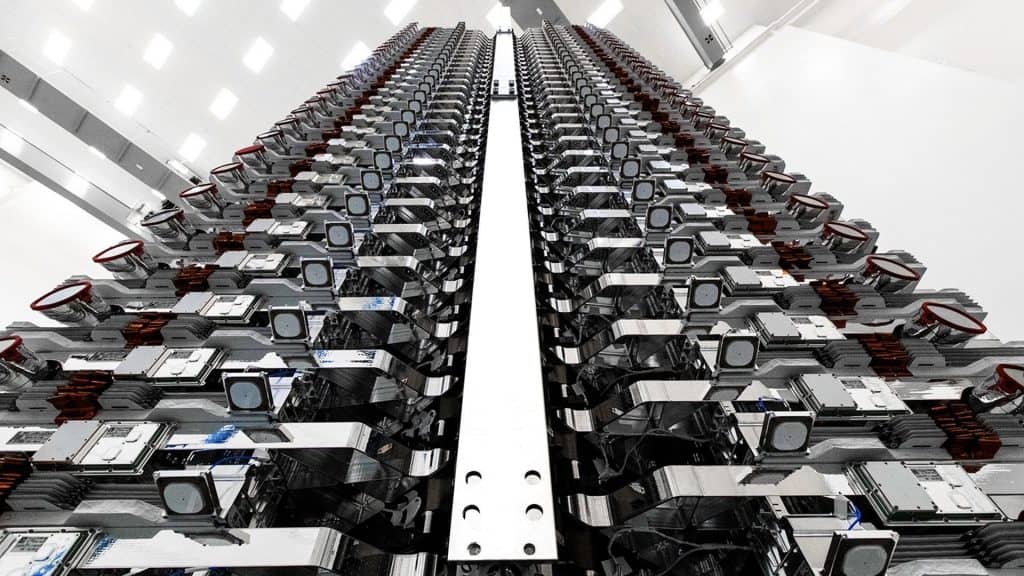
All 60 have successfully deployed their solar arrays.
The first batch of 60 Starlink internet satellites has been orbiting Earth for about a week, and now SpaceX has released a status update on the mission. According to a spokesperson, “all 60 satellites have deployed their solar arrays successfully, generated positive power and communicated with our ground stations.”
The statement didn’t directly mention concerns by astronomers about their brightness and visibility, but Elon Musk already has, and they aren’t expected to reach their full altitude for three to four weeks. According to SpaceX, “observability of the Starlink satellites is dramatically reduced as they raise orbit to greater distance and orient themselves with the phased array antennas toward Earth and their solar arrays behind the body of the satellite.”
Parabolic Arc notes that during a speech at MIT this week, SpaceX president Gwynne Shotwell mentioned four of the units had unspecified problems, while today’s update said “most” are using their Hall thrusters to reach operational altitude and have already made contact with their broadband antennas, but all of them have maneuvering capability to avoid each other and other objects.
SpaceX:
We continue to track the progress of the Starlink satellites during early orbit operations. At this point, all 60 satellites have deployed their solar arrays successfully, generated positive power and communicated with our ground stations.
Most are already using their onboard propulsion system to reach their operational altitude and have made initial contact using broadband phased array antennas.
SpaceX continues to monitor the constellation for any satellites that may need to be safely deorbited. All the satellites have maneuvering capability and are programmed to avoid each other and other objects in orbit by a wide margin.
Also, please note that the observability of the Starlink satellites is dramatically reduced as they raise orbit to greater distance and orient themselves with the phased array antennas toward Earth and their solar arrays behind the body of the satellite


